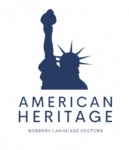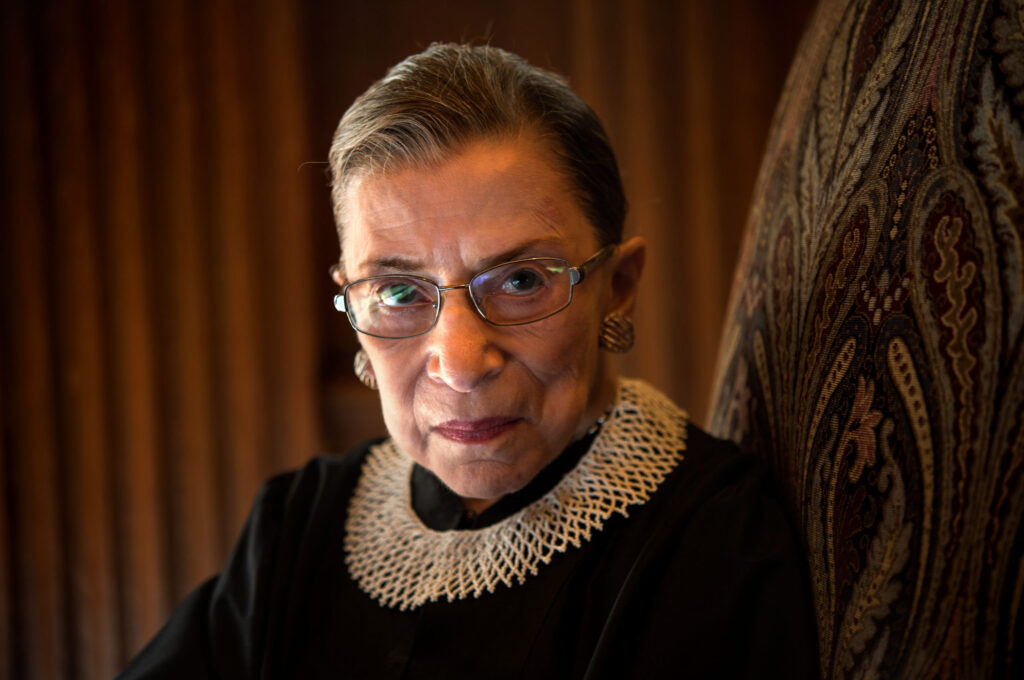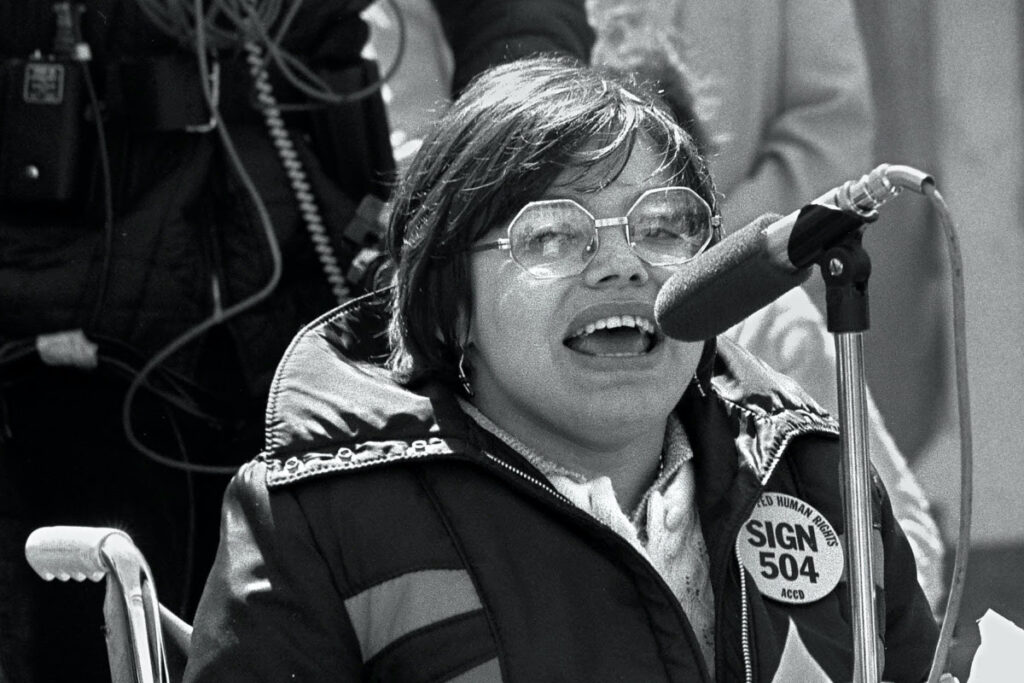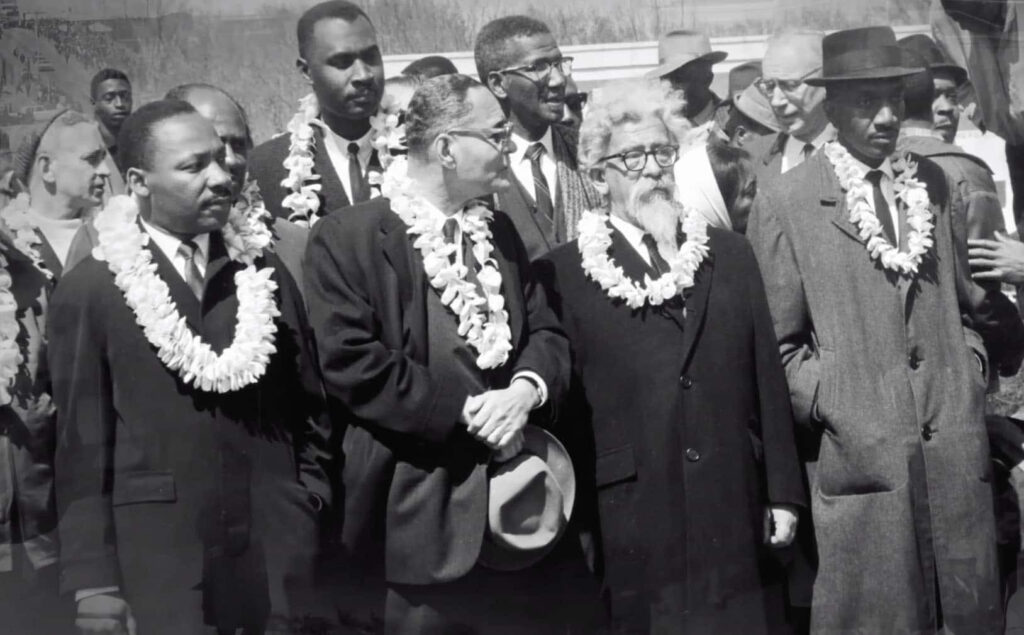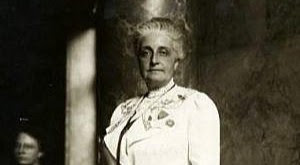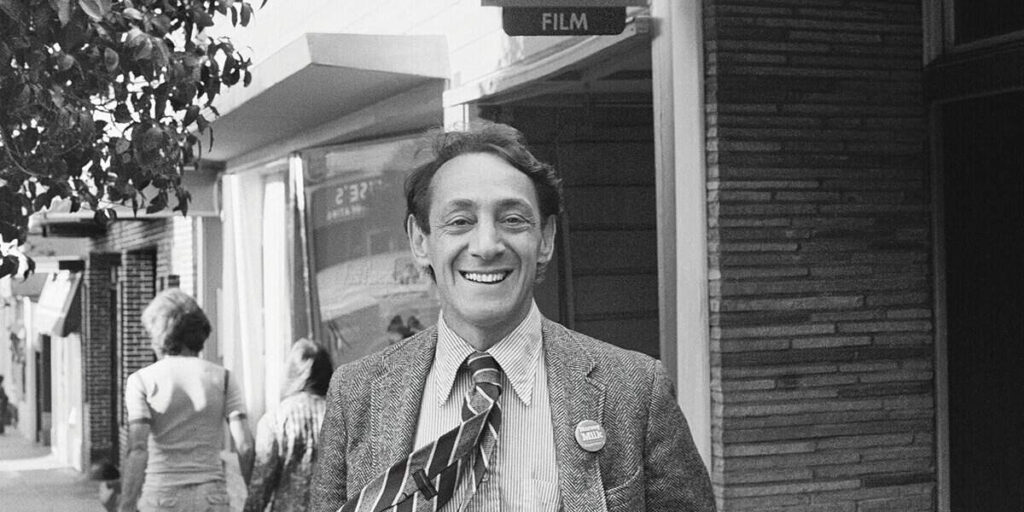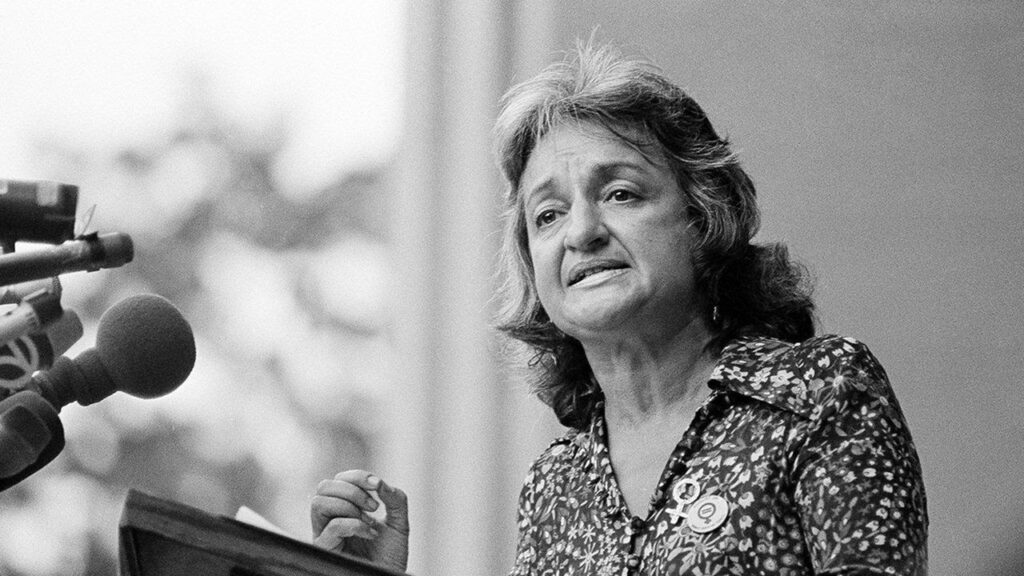Dear Partners,
Every Thursday morning throughout Jewish American Heritage Month (JAHM), we’ll be sending out an email focused on Jewish American contributions to a specific field. Each email will highlight seven notable Jewish Americans and feature seven action items and resources from partners. These emails are designed for you to be able to forward to your own constituents to help them celebrate JAHM. Please email Jacob@conferenceofpresidents.org if you have materials you would like included in future emails.
This week’s theme is “Jews in American Civil Rights Movements”.
This Week’s Highlights
Ruth Bader Ginsburg was the first Jewish woman and second ever woman to serve on the United States Supreme Court. After graduating top of her class from Columbia Law School, Ginsburg faced hiring discrimination on account of both her sex and her Jewish identity. She co-founded the ACLU Women’s Rights Project and won five gender discrimination cases at the Supreme Court. In 1980, she was confirmed as a U.S. District Court Judge and in 1993, she became a Supreme Court Justice. As the court’s composition changed, Ginsburg became known for her fiery dissents, especially in cases regarding civil rights. She was always proud of her Judaism and displayed the Torah quote, “Justice, justice shalt thou pursue” outside of her Supreme Court Office.
Judith Huemann is known as the “mother” of the Disability Rights Movement. Huemann contracted polio as a child, rendering her quadriplegic, and was discriminated against for her disability. When Huemann’s application to become a teacher was denied on account of her disability, she took the New York City Board of Education to court and won. Huemann was an instrumental advocate for landmark disability rights legislation, including a 26-day sit-in that led to the enforcement of Section 504 of the Rehabilitation Act and tireless lobbying efforts to secure passage of the Americans with Disabilities Act.
Rabbi Abraham Joshua Heschel was a prominent Jewish theologian, civil rights advocate, and philosopher of religion. Born in Poland in 1907, Heschel fled Nazi persecution and eventually settled in the United States, where he became a professor at the Jewish Theological Seminary. Heschel was a prolific writer and thinker and is known for works such as The Sabbath and God in Search of Man, in which he explored themes of spirituality, wonder, and the human relationship with the divine. Heschel was also a powerful moral voice in the American civil rights movement. He famously marched alongside Dr. Martin Luther King Jr. in Selma in 1965, later reflecting, “I felt my legs were praying”. Through his scholarship and activism, Heschel left a legacy as both a religious thinker and a champion of social justice.
Maud Nathan was a suffragist and activist who hailed from one of the oldest Sephardic Jewish families in America. Nathan served 30 years as the President of the New York Consumers League, where she advocated for workers’ rights and encouraged consumers to educate themselves on the conditions under which their purchases were produced. She was a committed suffragist who served as Vice-President of the Woman’s Municipal League of New York. Interestingly, Maud’s sister, Annie, was an Anti-Suffragist and the sisters often sparred, including in public op-eds. In 1897, Maud became the first woman to speak at the Sephardic congregation Shearith Israel, where she delivered a speech tying her Judaism to her commitment to Social Justice titled The Heart of Judaism.
Harvey Milk was a gay rights activist and member of the San Fracisco Board of Supervisors. Originally from Woodmere, Long Island, Milk eventually settled in San Francisco, quickly became affiliated with the city’s rapidly growing gay community and grew interested in politics. While he struggled to get elected as an openly gay man, he became known as the “Mayor of Castro Street”, which was the center of San Francisco’s gay community, for his advocacy and activism. In 1977, Milk was elected to the San Francisco Board of Supervisors, becoming the first openly gay elected official in a major American city. Less than one year later, disgruntled ex-Supervisor Dan White assassinated Milk. While he frequently found himself at odds with organized religion Milk celebrated Jewish holidays and proudly displayed a picture from his Bar Mitzvah in his campaign office.
The Jewish News of Northern California
Video: Harvey Milk: Gay Jewish Icon
Betty Friedan was a central figure in the second wave feminist movement, best known for her 1963 book The Feminine Mystique, which gave voice to the widespread dissatisfaction among women confined to traditional domestic roles, a condition she called “the problem that has no name”. The book helped ignite the modern women’s rights movement. In 1966, Friedan co-founded the National Organization for Women (NOW) and served as its first president, advocating for gender equality in employment, education, and reproductive rights. Her work played a key role in shaping the legal and cultural landscape of women’s rights in the United States. Friedan was also an ardent Zionist, leading other Jewish women to advocate against the UN Zionism is Racism declaration.
National Women’s History Museum
Charles McDew was a key leader in the Civil Rights Movement, serving as the second chairman of the Student Nonviolent Coordinating Committee (SNCC) in the early 1960s. Originally from Ohio, McDew became committed to activism after facing repeated racial injustice while attending South Carolina State College. Under his leadership, SNCC focused on voter registration in the Deep South to empower Black communities and challenge white supremacy. McDew’s leadership style was marked by courage, strategic vision, and a focus on grassroots organizing, helping SNCC develop innovative tactics like “Jail No Bail” and fostering local leadership in the fight for civil rights. Though raised in a Christian household, McDew converted to Judaism in his twenties, finding resonance in the religion’s core values of justice and shared historical memory. As noted by those close to him, he felt a deep connection to the Jewish experience of persecution and viewed Jewish ethical teachings as closely aligned with the struggle for civil rights. He remained an active and proud Jew throughout his life, often attending services and drawing strength from his faith. After his tenure with SNCC, McDew continued to work as a teacher, labor organizer, and community activist, committed to breaking down racial and cultural barriers throughout his life.
This Week’s Action Items
1) JAHM Book List
To celebrate this week’s JAHM theme, we are proud to highlight the vital role American Jews played in the Civil Rights Movement. From marching alongside Dr. Martin Luther King Jr. to advocating for justice in courtrooms and communities, Jewish activists and leaders were deeply involved in the fight for equality. One of our JAHM partners, the Jewish Book Council (JBC), has curated a book list exploring these contributions and the broader impact of Jewish involvement in the Civil Rights Movement. You can explore their book list HERE.
2) The Jewish Women’s Archive
The Jewish Women’s Archive (JWA) offers a powerful lens into the lives, voices, and activism of Jewish women in shaping feminism and social justice. As the world’s largest collection of materials on Jewish women in North America, JWA highlights how Jewish values, history, and identity have contributed to broader movements for gender equity and civil rights. Through educational resources, digital exhibits, and storytelling initiatives, JWA empowers individuals to explore Jewish women’s roles in shaping a more just and inclusive society. You can explore their extensive resources and learn more about how Jewish feminism have contributed to American life HERE.
3) Explore the National Archives
The National Archives offers a compelling opportunity to explore the vital role Jewish Americans have played in our country’s history. This week’s JAHM theme, celebrating Jews in Civil Rights Movements, is reflected in the Archives’ extensive collection of documents, photographs, and records that highlight how Jewish individuals and communities have contributed to the ongoing pursuit of justice and equality in the United States. From correspondence between Jewish leaders and civil rights activists to pivotal legislation and moments of public service, these materials illustrate a powerful legacy of solidarity and advocacy. Explore these stories and more HERE.
4) Declare JAHM in Your Community
Since 2006, JAHM has celebrated the ways Jewish Americans have shaped our nation’s history and values, including their pivotal contributions to social justice and the ongoing pursuit of civil rights. At a time of rising antisemitism, issuing a local proclamation affirms a community’s commitment to education, inclusion, and historical recognition. Please click HERE for more information and a sample proclamation from one of our JAHM partners, the Combat Antisemitism Movement, to help you get started. Local Jewish Federations and JCRCs are working on these initiatives across the country, please reach out to your local Federation to get engaged and help push JAHM resolutions in your community. You can also use this Federations created toolkit, which contains sample resolution language and other resources, to support your JAHM efforts.
5) Documentary: Shared Legacy
We invite you to explore the documentary Shared Legacies. This powerful film chronicles the historic alliance between the African American and Jewish communities during the civil rights era, highlighting their shared struggles, mutual support, and commitment to justice. At a time when combating hate and promoting solidarity is more important than ever, Shared Legacies serves as a meaningful reminder of the enduring impact of intercommunal partnership. Please click HERE to learn more about the documentary.
6) Bring JAHM into Your Classroom with Educator Resources
Bring JAHM into your classroom with our comprehensive Educator Resources. This page offers an extensive collection of classroom ready materials designed to help educators explore the history, culture, and contributions of Jewish Americans. Resources include lesson plans, primary source activities, and professional development tools, all tailored for various grade levels and subject areas. Whether you are teaching social studies, language arts, or civics, these materials offer meaningful ways to engage students with Jewish American heritage. In addition, we have provided lesson plans specifically aligned with this week’s JAHM theme to offer timely and relevant content for your curriculum. Please see HERE for more information.
7) Raising Awareness – JAHM Toolkit
Help raise awareness about JAHM by sharing JAHM content throughout May. The JAHM Toolkit makes it easy, offering ready to use social media graphics and prewritten posts that celebrate the contributions of Jewish Americans to our nation’s story. These materials can be shared online or adapted for newsletters, classrooms, bulletin boards, and more. By using and sharing the toolkit, you will help amplify JAHM’s message and promote greater awareness and inclusion. Please click HERE to access the toolkit.
8) Honoring JAHM: Hadassah’s Legacy and Ongoing Advocacy
In honor of Jewish American Heritage Month, JAHM partner Hadassah, Women’s Zionist Organization of America published an article that looks at Hadassah’s historic involvement in civil rights, Holocaust education, women’s health equity causes and more. Click HERE to learn about Hadassah’s role in our country’s history. JAHM is also a good time to learn about recent Hadassah policy statements and opportunities to take action on its current legislative priorities.
Conference of Presidents of Major American Jewish Organizations
